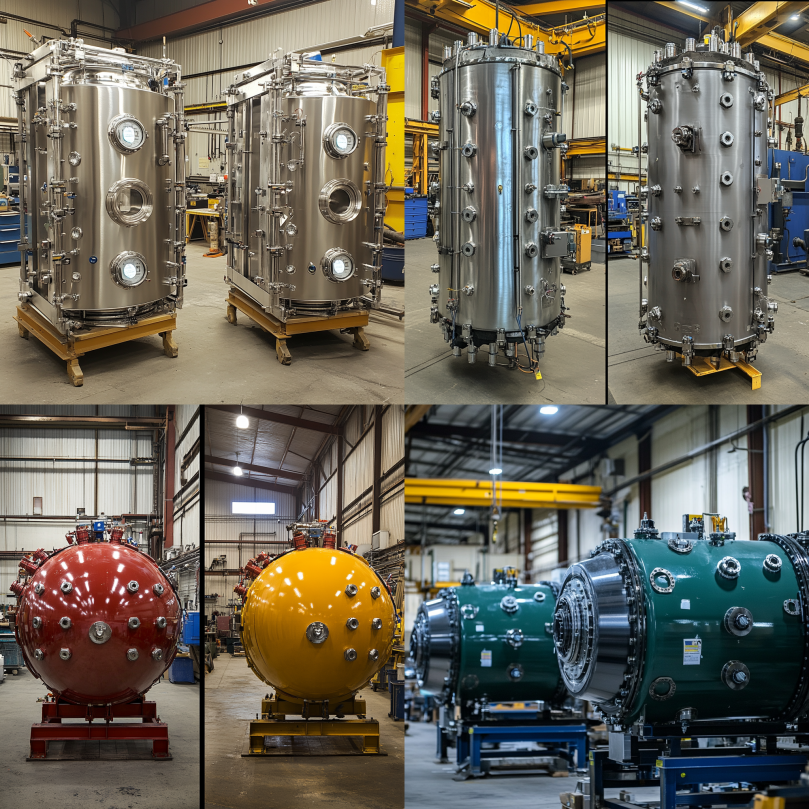
Modular vs Integrated Design: Choosing the Best Pressure Vessel Strategy
Modular vs. Integrated Design is a key consideration in OEM pressure vessel engineering, sparking ongoing debate among manufacturers, system designers, and engineers aiming to optimize performance. The choice between Modular vs Integrated Design plays a crucial role in determining how well a pressure vessel system aligns with operational goals such as speed, scalability, maintainability, and long-term cost efficiency.
In Modular vs Integrated Design comparisons, modular systems often appeal to those prioritizing rapid deployment, ease of maintenance, and adaptability for future upgrades. On the other hand, integrated designs may offer tighter control, reduced footprint, and seamless system cohesion. Understanding the trade-offs between Modular vs Integrated Design is essential when balancing performance expectations with budget constraints and compliance requirements.
In today’s fast-paced industrial landscape—where uptime, agility, and lifecycle value are more important than ever—choosing between Modular vs Integrated Design can directly impact productivity, safety, and long-term ROI. Carefully evaluating these two design philosophies ensures that engineering teams make informed decisions tailored to specific application needs.
What Is Modular OEM Pressure Vessel Design?
In the context of Modular vs Integrated Design for OEM pressure vessels, the modular approach involves using standalone, pre-engineered components that are assembled into a complete and functional system. This method of design supports faster fabrication, simplified transportation, and easier installation, making it a compelling choice in the Modular vs Integrated Design discussion. By leveraging modular construction, manufacturers can streamline project timelines, reduce onsite labor, and create highly adaptable pressure vessel systems tailored to changing operational demands.
Features of modular design:
- Factory-fabricated, skid-mounted vessels
- Plug-and-play operation
- Easily scalable or upgradable
- Easier transport and repositioning
- Supports distributed layouts across facilities
Modular systems are especially valuable for industries with variable loads, changing product lines, or mobile operations.
What Is Integrated OEM Pressure Vessel Design?
On the other side of the Modular vs Integrated Design comparison in OEM pressure vessel systems, integrated designs represent a fully unified approach. In this configuration, the pressure vessel is seamlessly built into the surrounding equipment and infrastructure, often resulting in a tighter system footprint and optimized process flow. Within the framework of Modular vs Integrated Design, integrated systems are typically favored in facilities where space efficiency, centralized control, and system cohesion are top priorities. However, this design strategy may require longer installation times and more extensive customization during fabrication.
Features of integrated design:
- Seamlessly built into existing process lines
Typically custom-engineered for fixed use - Optimized for energy and material efficiency
- Compact, centralized footprint
- Reduced connection points
Integrated designs are ideal for high-volume, continuous operations where maximum efficiency and consistency are critical.
Comparing Benefits: Modular vs. Integrated OEM Pressure Vessel Design
Scalability
Modular: Easily expand systems by adding new units
Integrated: Difficult and costly to scale once installed
Installation Time
Modular: Pre-built systems drastically cut field assembly time
Integrated: Requires longer engineering, procurement, and commissioning timelines
Flexibility
Modular: Flexible for reconfiguration and relocation
Integrated: Locked into permanent infrastructure
Maintenance & Downtime
Modular: Components can be serviced or swapped independently
Integrated: Maintenance often disrupts the entire system
Cost Structure
Modular: Higher upfront fabrication cost, lower installation cost
Integrated: Higher engineering and site construction costs
Use Case Scenarios for Each Design
Understanding real-world applications helps clarify the modular vs. integrated OEM pressure vessel design decision.
Best Fit for Modular Design:
- Pilot plants and R&D labs
- Remote or offshore facilities
- Temporary installations
- Multi-product processing
- Seasonal production spikes
Best Fit for Integrated Design:
- Large-scale chemical plants
- Power generation facilities
- Centralized water treatment
- Refineries and petrochemical operations
- Facilities with space or energy constraints
Code Compliance and Engineering Requirements
Whether choosing modular or integrated, both OEM pressure vessel designs must comply with ASME Section VIII, local codes, and client specifications.
Key compliance considerations:
- Pressure and temperature ratings
- Weld inspection and NDT protocols
- Material traceability
- Quality documentation
- Startup and commissioning checklists
Modular designs often come pre-tested, while integrated systems require site testing and commissioning.
Future Trends in OEM Pressure Vessel Design
In the evolving space of modular vs. integrated OEM pressure vessel design, several hybrid approaches are emerging.
Trends to watch:
- Modular-integrated hybrids: Base system is integrated, with modular add-ons
- Smart skids: Modular systems equipped with IoT and cloud controls
- Digital twins: Both designs simulated virtually for optimization
- Pre-certification: Modular systems pre-certified for global deployments
These innovations allow facility managers to enjoy the best of both design strategies.
Final Thoughts on OEM Vessel Design Strategy
Deciding between Modular vs Integrated Design in OEM pressure vessel systems is not a one-size-fits-all decision. Each design philosophy presents unique advantages, and the best choice depends on factors such as industry requirements, site conditions, operational goals, and future expansion plans. In the broader context of Modular vs Integrated Design, modular pressure vessel systems offer unmatched speed, flexibility, and ease of deployment—making them ideal for rapidly evolving operations or temporary installations.
Conversely, integrated designs excel when long-term system cohesion, performance optimization, and space efficiency are critical. These systems are built to fit precisely within existing infrastructure and often yield superior efficiency and control. By carefully evaluating your priorities—whether scalability, adaptability, or permanence—you can make an informed decision in the Modular vs Integrated Design debate and invest in a solution that supports long-term operational success.
Need a reliable partner?
Red River specializes in the design and manufacturing of pressure vessels. We also fabricate related items such as prefabricated spools and skid packages.
Reach out to us today and experience the Red River difference. Where American-made products and American Values come together, we care more.
Frequently Asked Questions
1. Which is more cost-effective: modular or integrated?
Modular systems may have higher upfront costs but save money on installation and maintenance. Integrated systems require more capital investment during construction.
2. Are modular OEM pressure vessels easier to move?
Yes. Modular vessels are designed for mobility and reinstallation across different sites.
3. Which design is more common in the U.S.?
It depends on the industry. Modular is growing in biotech and water treatment, while integrated remains strong in oil, gas, and power generation.
4. Can I use both modular and integrated vessels in the same plant?
Absolutely. Many facilities use a hybrid approach—core systems are integrated, with modular units added as needed.
5. Are modular systems ASME certified?
Yes. Reputable U.S. manufacturers provide modular pressure vessels that meet or exceed ASME Section VIII standards.
Key Takeaways
- Modular vs. integrated OEM pressure vessel design offers two distinct paths: flexibility or full system integration.
- Modular systems excel in fast-paced, evolving environments; integrated designs deliver peak operational performance.
- Cost, maintenance, scalability, and layout drive your design decision.
- Code compliance, safety, and material selection apply to both strategies.
- Hybrid models and smart modules are leading future developments in OEM pressure vessel design.
